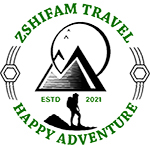Mkomazi National Park: A Jewel of Conservation in Tanzania
Mkomazi National Park is a semi-arid wilderness located in northeastern Tanzania, near the border with Kenya. Covering an area of approximately 3,245 square kilometers, it is one of Tanzania’s lesser-known parks, making it an ideal destination for travelers seeking a peaceful and uncrowded safari experience. The park plays a critical role in wildlife conservation, particularly for endangered species, and offers striking landscapes with a blend of savannah, bushlands, and distant mountain vistas.
Overview
Geography and Ecosystem
Location: Situated in the Kilimanjaro and Tanga regions, Mkomazi forms part of the larger Tsavo-Mkomazi ecosystem, sharing a border with Kenya’s Tsavo National Park.
Terrain: The park features semi-arid savannah plains, rocky outcrops, and seasonal rivers, with patches of acacia woodlands and baobab trees.
Proximity to Mount Kilimanjaro: Visitors can enjoy views of Mount Kilimanjaro and Mount Meru in the distance on clear days.
Water Sources: Although semi-arid, the park is crisscrossed by seasonal rivers and waterholes, which support its diverse wildlife.
Wildlife and Conservation
Mkomazi National Park is a sanctuary for both iconic African animals and rare, endangered species.
Key Wildlife Species
Large Mammals:
Elephants, giraffes, zebras, and buffalos are common.
Predators like lions, leopards, cheetahs, and hyenas can also be spotted.
Rare Species:
The park is famous for its populations of black rhinos, protected in the Mkomazi Rhino Sanctuary.
It also supports African wild dogs, a species once near extinction in Tanzania.
Birdlife:
Mkomazi is home to over 450 bird species, including the Kori bustard, martial eagle, and secretary bird.
Migratory birds are abundant during the wet season.
Conservation Efforts
Mkomazi Rhino Sanctuary:
The sanctuary is a fenced and highly secure area, dedicated to the protection of the critically endangered black rhino.
Visitors can observe rhinos under the guidance of rangers and learn about ongoing conservation efforts.
Wild Dog Breeding Program:
The park has been instrumental in reintroducing wild dogs to the wild, ensuring their survival in the region.
Anti-Poaching Initiatives:
Rigorous anti-poaching measures are in place to protect wildlife, particularly rhinos and elephants.
Activities in Mkomazi National Park
Game Drives:
Explore the park’s vast open plains and woodlands to encounter its diverse wildlife.
Bird Watching:
Ideal for bird enthusiasts, especially during the wet season when migratory species arrive.
Guided Rhino Sanctuary Visits:
Learn about black rhino conservation and observe these majestic animals up close in a secure setting.
Walking Safaris:
Guided nature walks allow visitors to experience the park’s flora, smaller wildlife, and scenery on foot.
Cultural Interactions:
Visit nearby Pare and Sambaa communities to learn about their traditional lifestyles and involvement in conservation.
Scenic Highlights
Stunning Landscapes:
The park offers dramatic views of the surrounding mountains and rolling savannah plains.
Seasonal Blooms:
During the wet season, Mkomazi transforms into a vibrant landscape with blooming wildflowers and lush greenery.
Panoramic Views:
The park’s elevated areas provide breathtaking vistas of Mount Kilimanjaro, Mount Meru, and Kenya’s Tsavo plains.
Accessibility
By Road:
The park is accessible from Arusha (190 km), Moshi (120 km), or Tanga (120 km) via well-maintained roads.
By Air:
The nearest major airport is Kilimanjaro International Airport, approximately 150 kilometers away.
Proximity to Other Attractions:
Mkomazi is an excellent addition to a northern Tanzania safari itinerary, complementing visits to Mount Kilimanjaro, Serengeti, or Tarangire National Parks.
Best Time to Visit
Dry Season (June to October):
Wildlife congregates around water sources, making animals easier to spot.
Wet Season (November to May):
The park is lush and green, offering excellent birdwatching opportunities, but some areas may be less accessible.
Advantages of Mkomazi National Park
Exclusive Experience:
The park’s lower visitor numbers ensure a tranquil and private safari experience.
Conservation Focus:
Mkomazi is a leading example of successful conservation efforts for black rhinos and wild dogs.
Rich Birdlife:
The park is a paradise for birdwatchers with a mix of resident and migratory species.
Scenic Diversity:
Its unique semi-arid environment and proximity to Kilimanjaro provide stunning photographic opportunities.
Challenges
Limited Infrastructure:
Compared to more famous parks like Serengeti, Mkomazi has fewer accommodations and visitor facilities.
Accessibility During the Wet Season:
Some areas may be difficult to access due to seasonal flooding and muddy roads.
Limited Marketing:
The park is relatively lesser-known, meaning fewer tourism services and promotional activities compared to larger parks.
Why Visit Mkomazi National Park?
Mkomazi offers a unique safari experience that combines wildlife, conservation, and stunning landscapes. It is perfect for visitors seeking an off-the-beaten-path destination with opportunities to witness rare species like black rhinos and wild dogs. Its proximity to northern Tanzania’s major attractions makes it an ideal addition to any itinerary.




